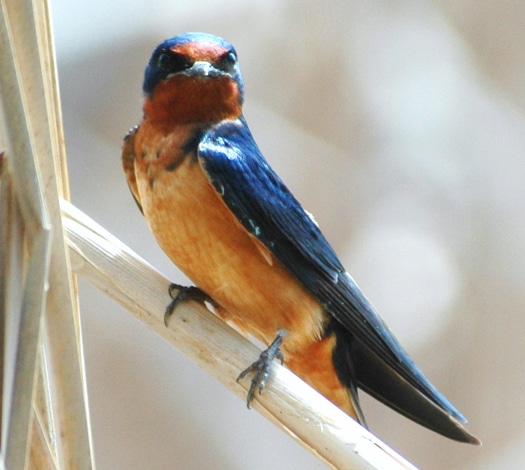May 22, 2025 6:26 pm
barn swallow The elite flyer

greetings mon cheri
Although I have labeled the Barn Swallow as an elite flyer it may not be the fastest, but certainly has superb maneuverability.
Virtually all of its diet is caught on the wing.
Insects make the bulk of their diet.
Their habitat is open meadows with trees and shrubs for perching, even more so if ponds are close by – like marshes.
Forested areas are often ignored as food and nesting environments.
Nesting in less than densely built areas they prefer structures or have adapted to human structures under eaves and bridges.
The nests are made of a mud exterior lined with straw, feathers and soft materials.

I think…
Once they reach adulthood, the life span is expected to be about 4 or 5 years.
Barn swallows have few predators other than raptors, owls and cats.
Being a passerine, they are seldom on the ground.
https://en.wikipedia.org › wiki › Passerine
They are the most common swallow species globally.

perched at Etobicoke Creek
During migration season flocks can number in the thousands.
Often times their nesting habits can be found in groups, perhaps its family ties, as they do tend to come back to the same nesting locations when migrating back.
For drinking water, skimming over ponds with their beak open is the technique observed -leaving just a speed boat ripple on the water.

beautiful plumage
The longer forked tail identifies the male bird, otherwise it is difficult to distinguish the sexes by appearance.
Most of my sightings have been at Colonel Samuel Smith Park, Kipling Ave, south of Lakeshore Blvd, Etobicoke and Etobicoke Creek, Mississauga.

blue and rusty

rusty and blue
Bank Swallow
I would like to highlight a swallow here that has become an endangered species.
The Bank swallow is now a protected species in canada.
The Bank swallow has a very similar habitat to its cousin the Barn swallow, and diet – being insectivores.
They are smaller, with black feathers and no rustic coloration with a pale underbelly.

Bank Swallow
However, the Bank swallow prefers nesting in the banks of sandy or soft earth, hollowing out holes and nesting inside.
I have found a colony at the Evergreen Brickworks.
I would love to see your comments below.
Register / Login required to comment

